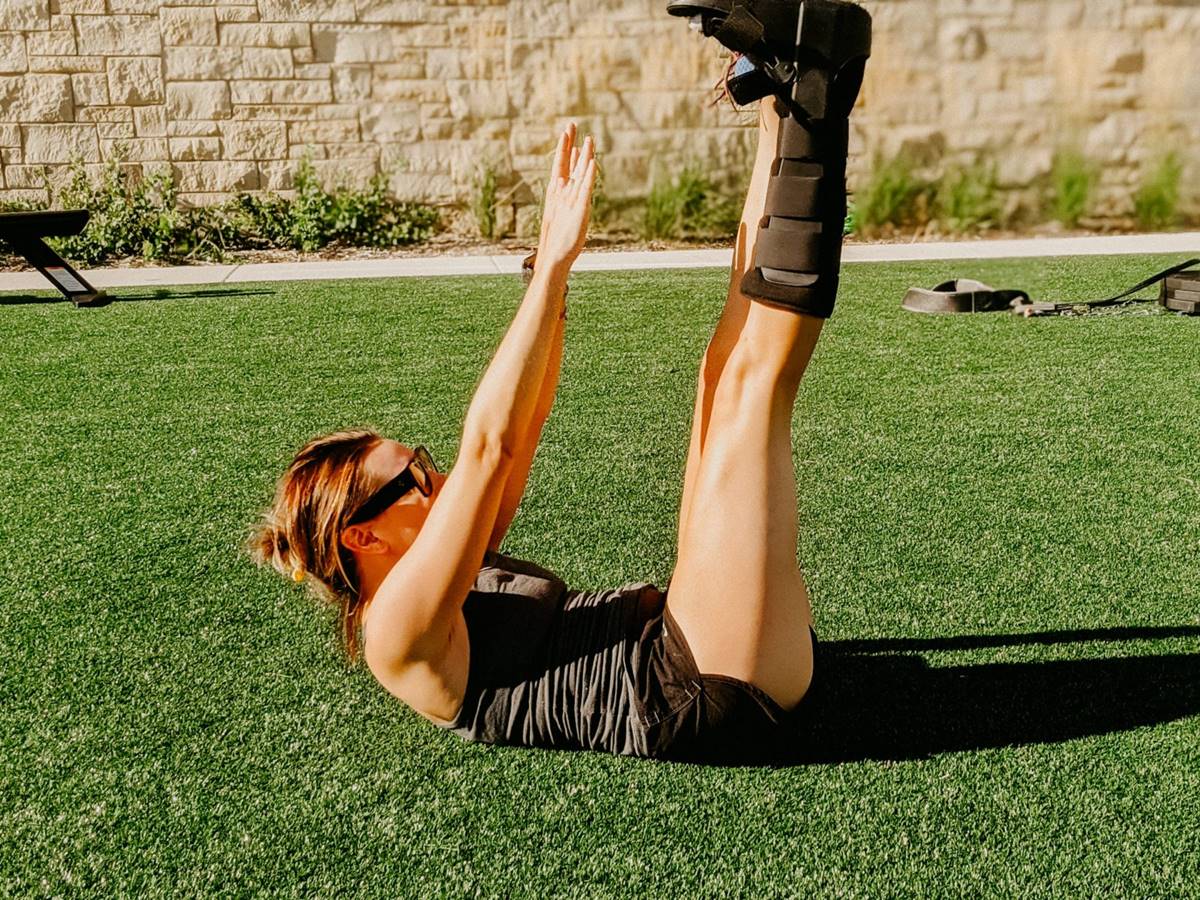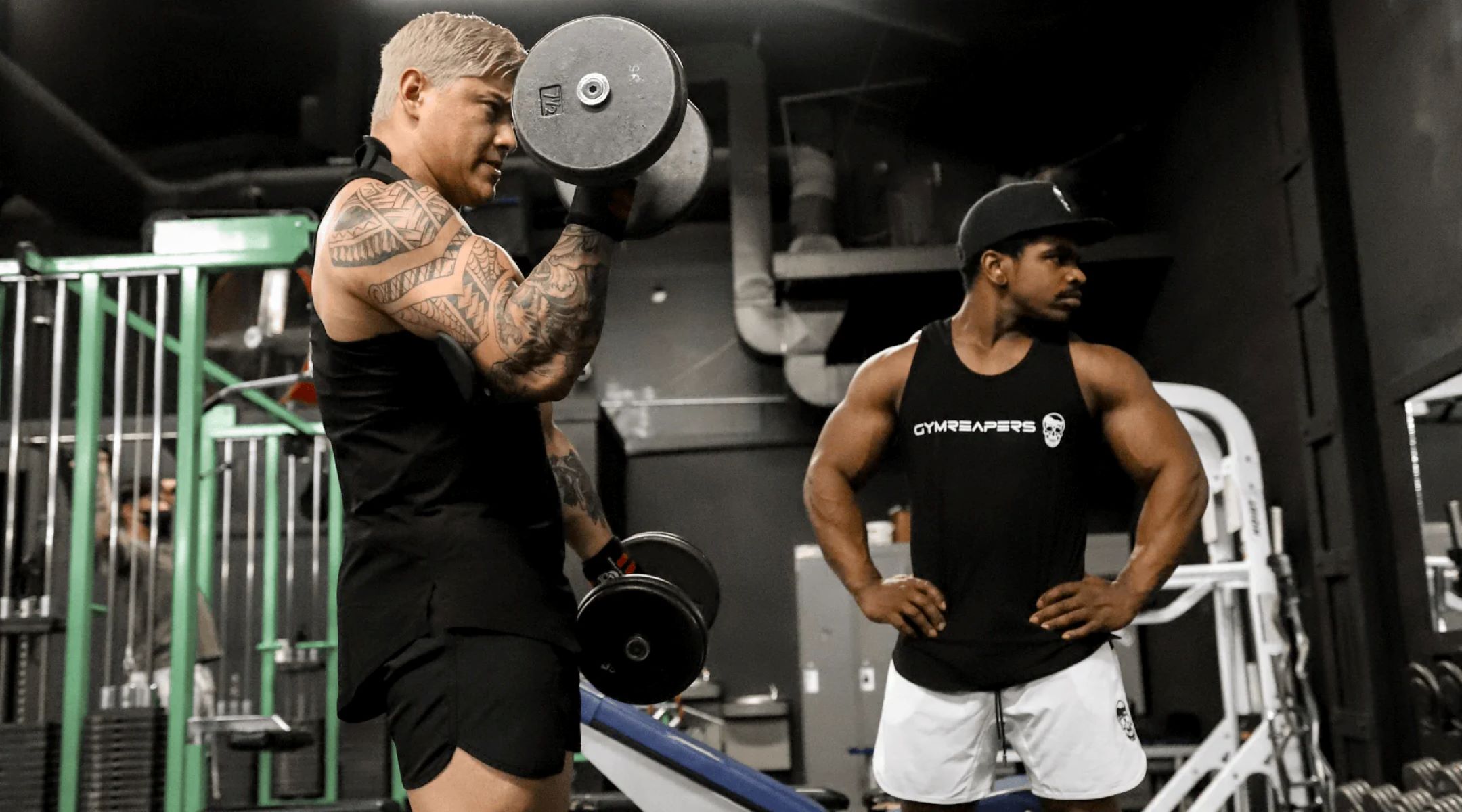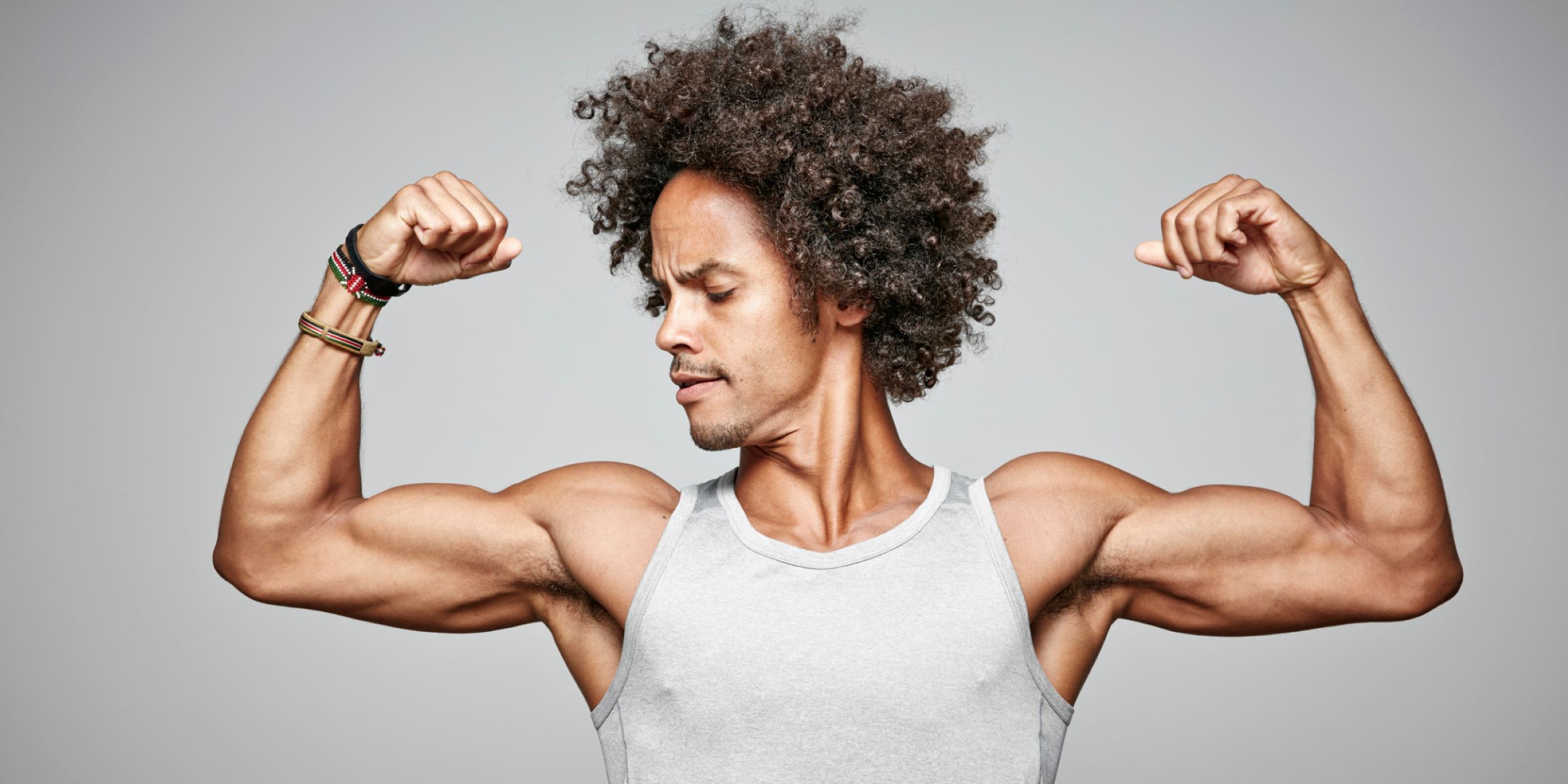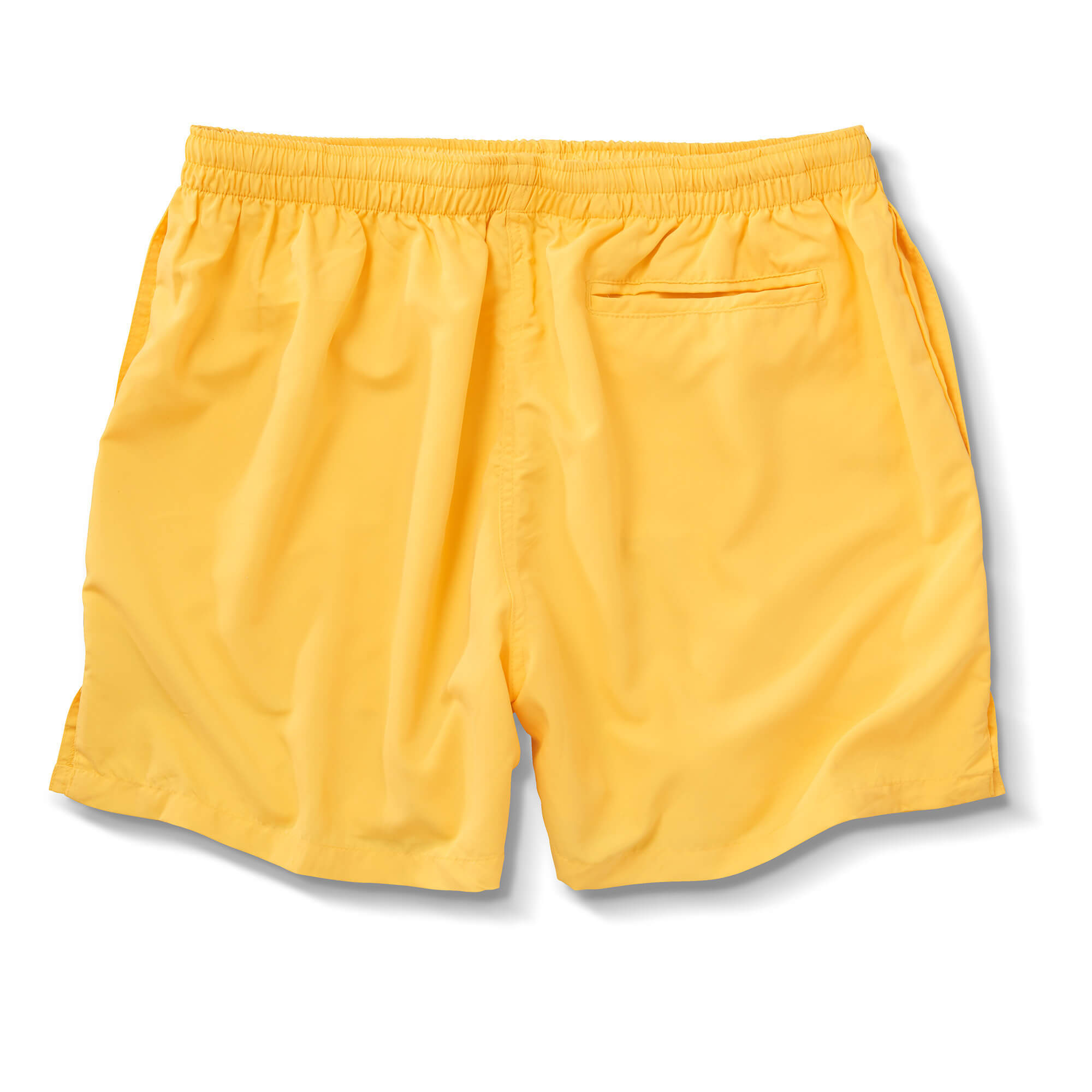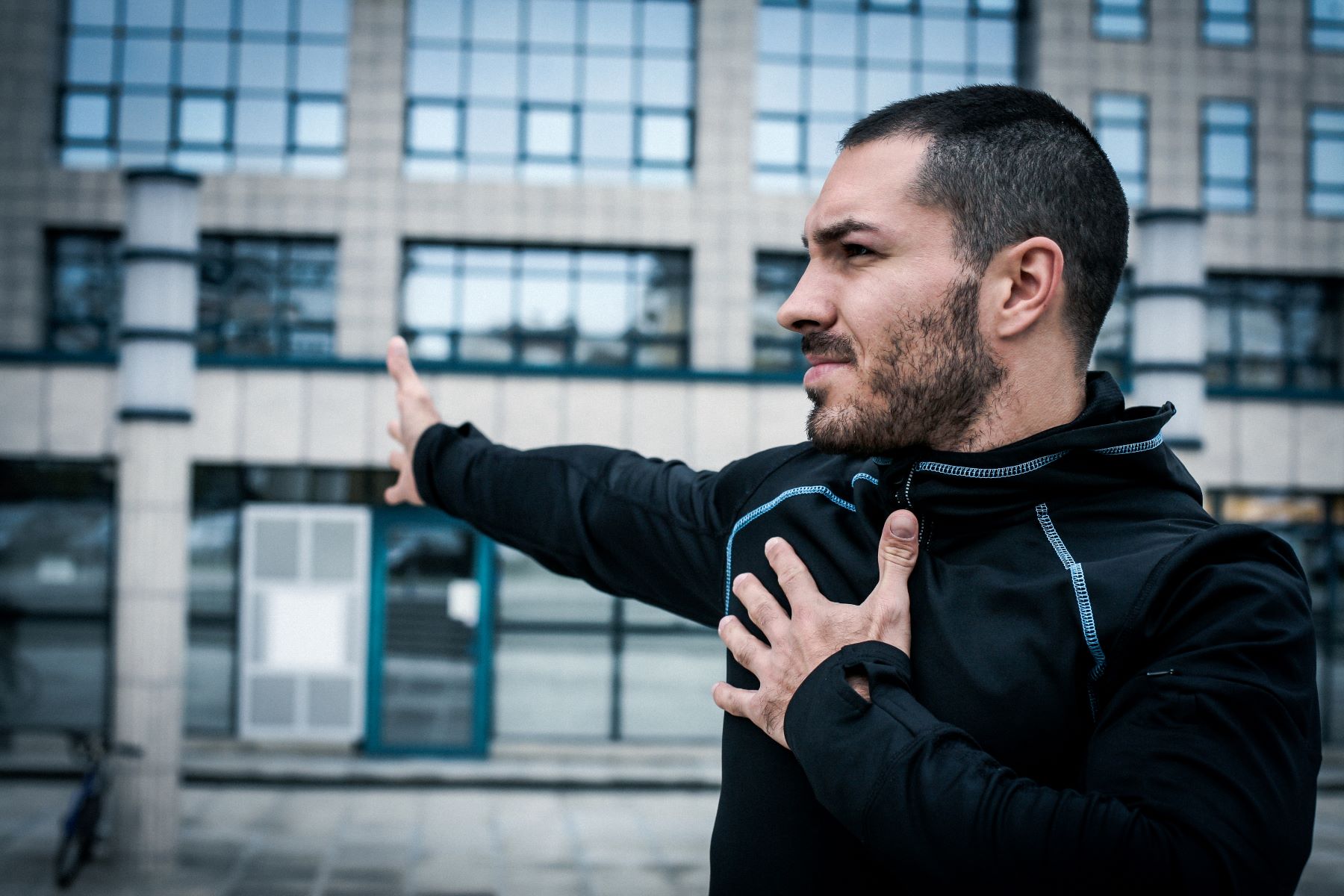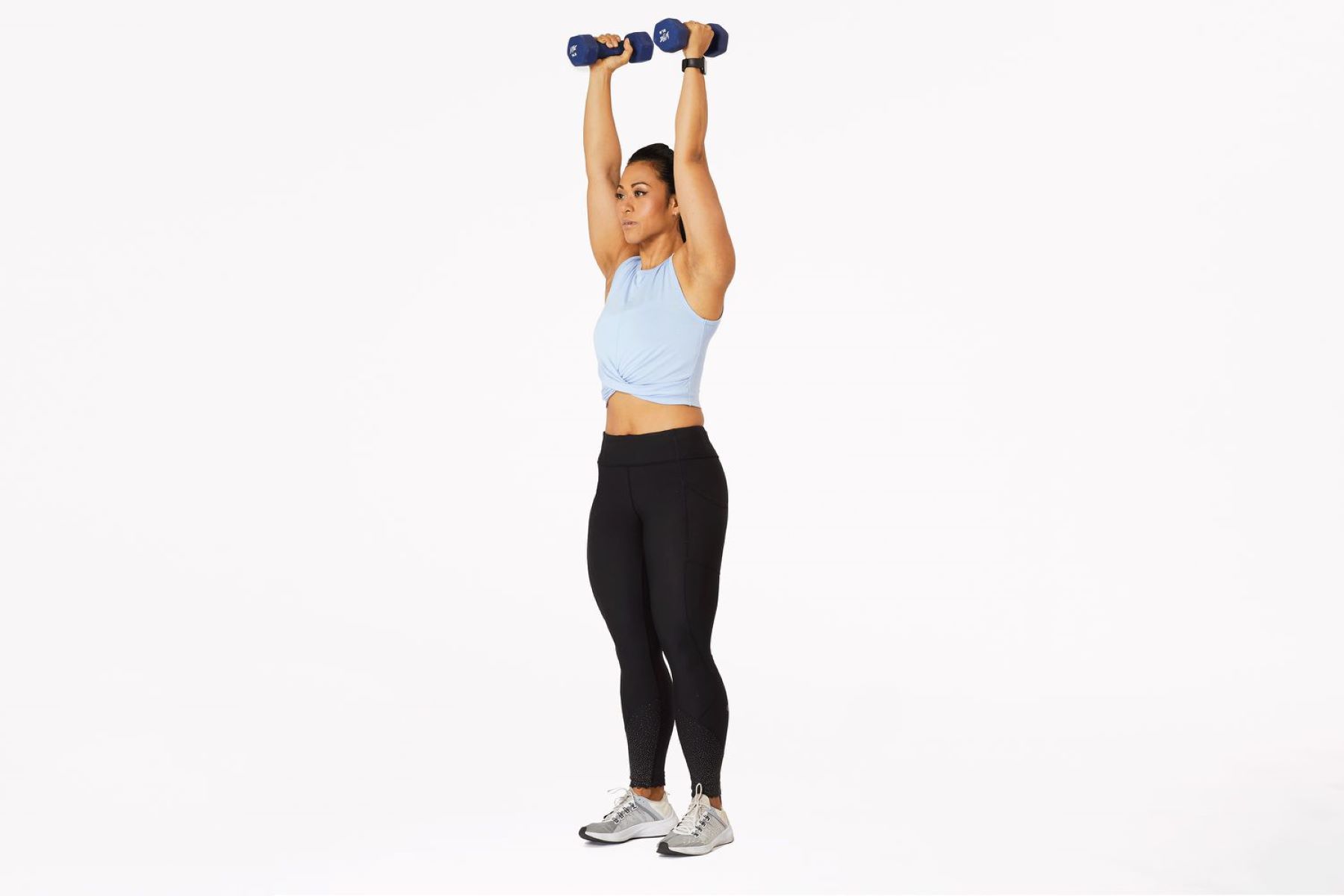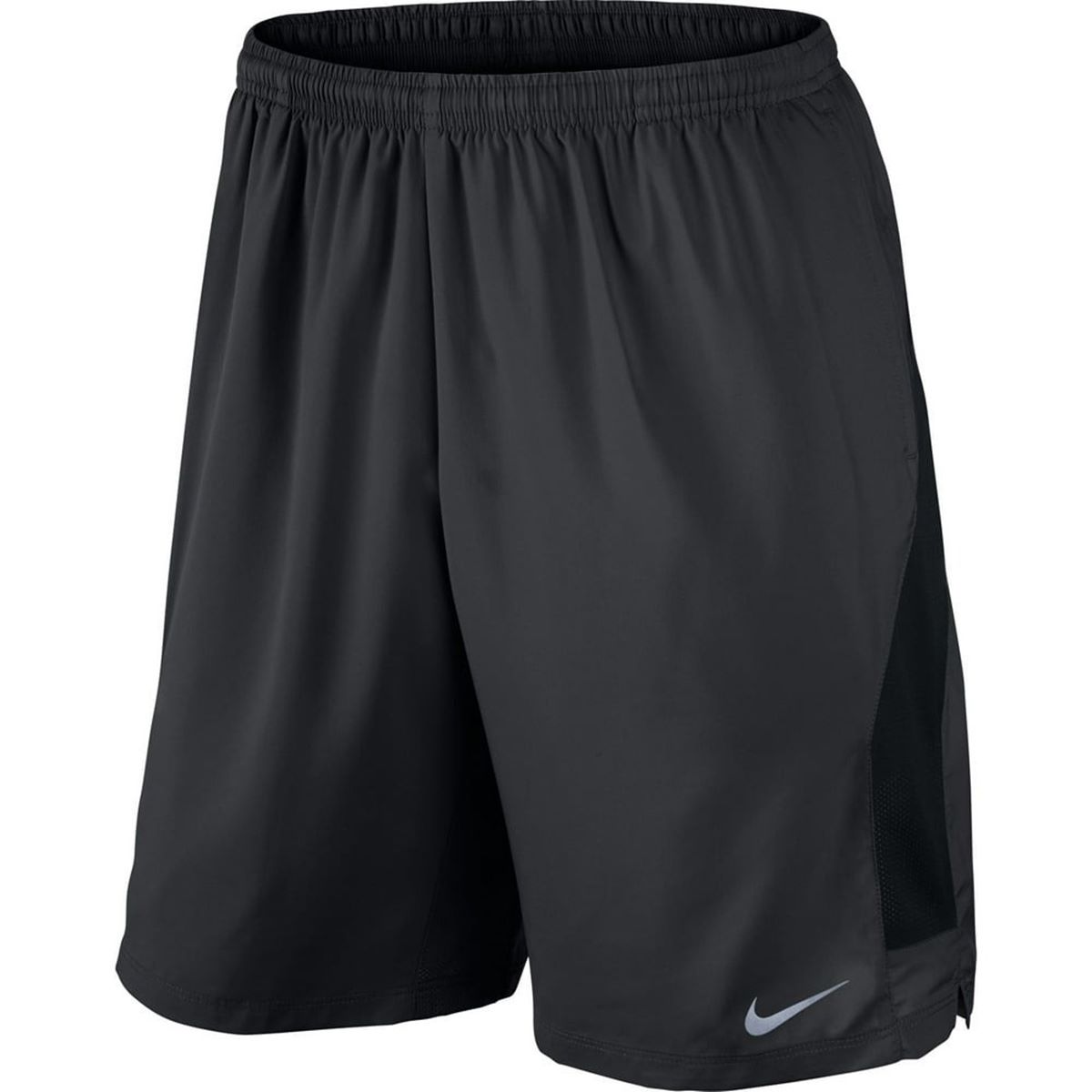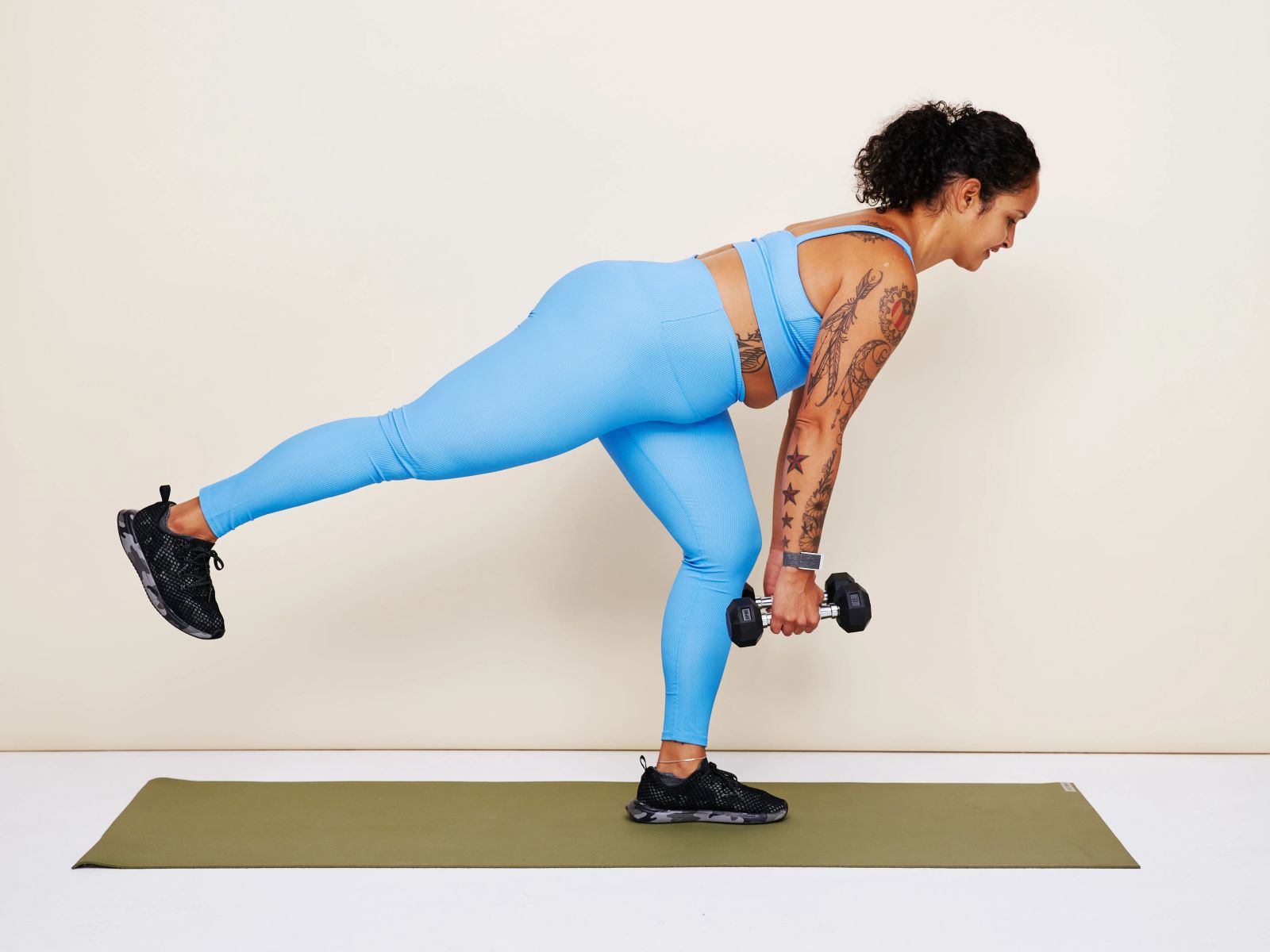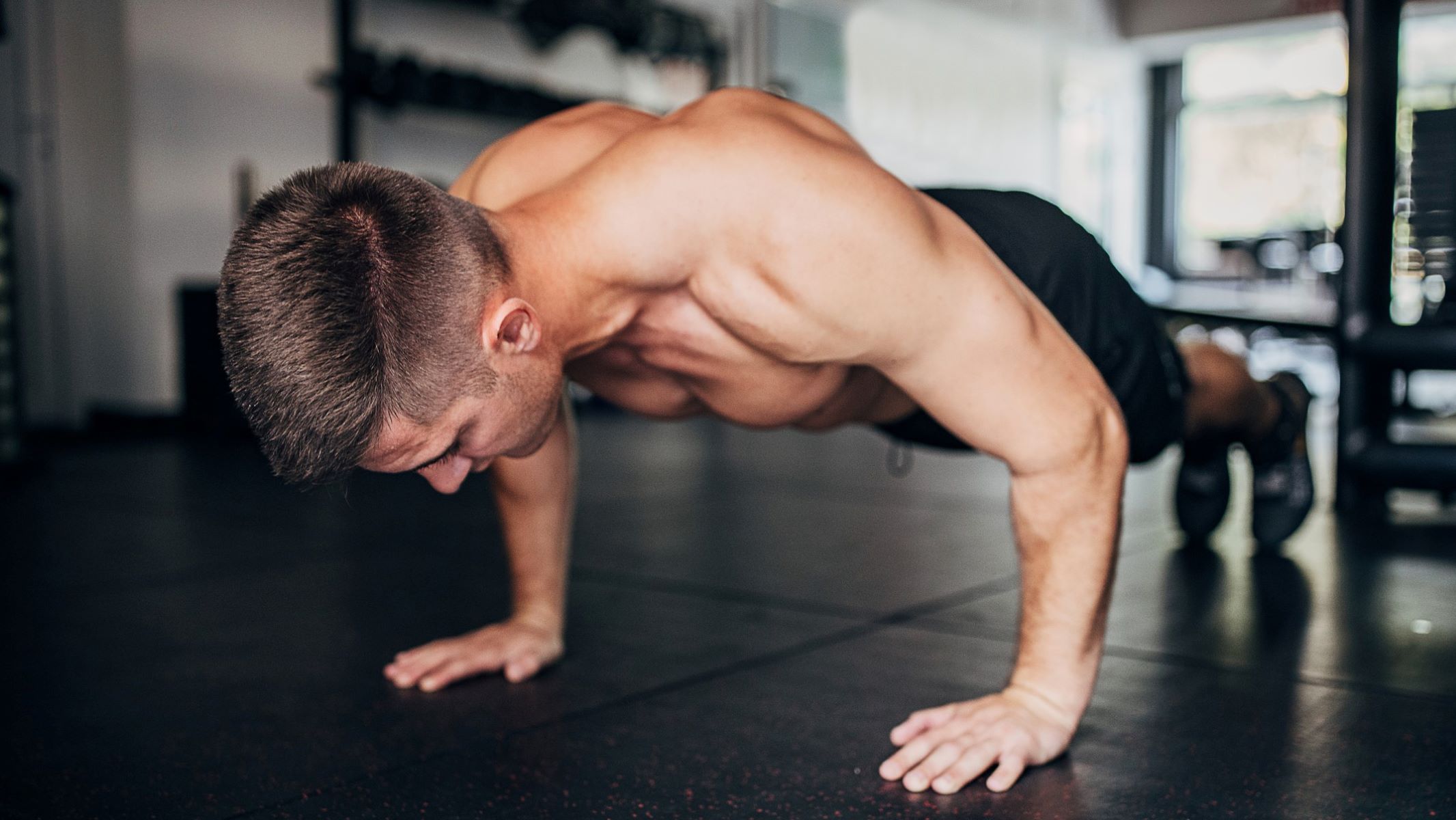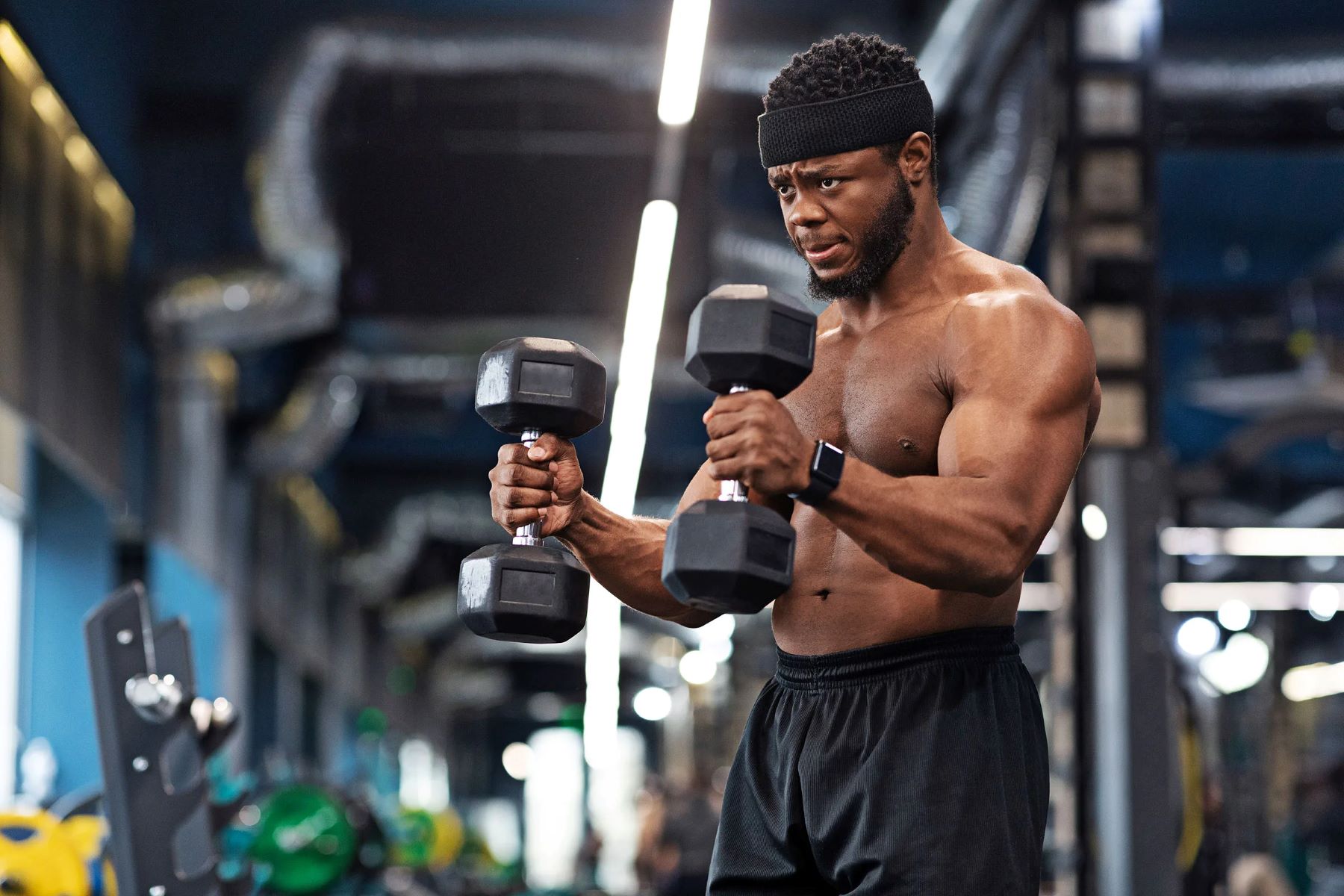

Featured
What Does Curls Workout
Modified: January 2, 2024
Discover the ultimate featured workout designed specifically for curls. Enhance your curl definition and build strength with this targeted curl workout routine.
Introduction
Welcome to the world of curls! If you’ve ever stepped foot in a gym or picked up a dumbbell, chances are you’re familiar with this classic exercise. Curls are a staple in any strength training or bodybuilding routine, and for good reason. Not only do they help you build impressive biceps, but they also contribute to overall upper body strength and aesthetics.
But what exactly are curls? In essence, a curl is a pulling movement that primarily targets the muscles of the arms, namely the biceps brachii. While it may seem like a simple exercise, mastering the technique and form can greatly amplify its effectiveness and prevent injury.
In this article, we will explore the wide range of benefits that curls offer, the specific muscles they target, different variations and modifications, common mistakes to avoid, and tips for optimizing your curls workout. Whether you’re a fitness enthusiast looking to gain muscle or someone seeking to tone and sculpt your arms, this comprehensive guide will help you make the most out of your curls routine.
So, grab your weights, get ready to pump those guns, and let’s dive into the world of curls!
Benefits of Curls
Curls may be a popular exercise for building biceps, but their benefits extend far beyond just aesthetics. Here are some reasons why incorporating curls into your fitness routine can be beneficial:
- Increased Bicep Strength: One of the primary benefits of curls is that they help to develop and strengthen the biceps brachii muscles. By consistently performing curls, you can enhance your ability to perform everyday tasks that involve pulling or lifting objects.
- Improved Upper Body Appearance: Curls are known for their ability to create well-defined and sculpted biceps. If you’re looking to enhance your upper body aesthetics, curls can help you achieve that coveted “beach body” look.
- Functional Upper Body Strength: Strong biceps are not just for show. They play a key role in various functional movements, such as lifting, pulling, and carrying objects. Developing your biceps through curls can improve your performance in these activities.
- Engaged Forearm Muscles: While curls primarily target the biceps, they also engage other muscles in the upper body, including the brachialis and brachioradialis muscles in the forearms. This can contribute to overall arm strength and stability.
- Burns Calories: Curls are a compound exercise that engages multiple muscle groups. As a result, they can help increase your overall calorie burn during and after your workout. Incorporating curls into your routine can be an effective way to support weight loss and improve overall body composition.
- Improved Grip Strength: Gripping the weights during curls can strengthen your grip, which is essential for various exercises and activities both inside and outside the gym. Better grip strength can enhance your performance in weightlifting, sports, and other physical activities.
These are just a few of the many benefits that curls offer. Whether you’re striving for stronger arms, a more defined physique, or improved functional strength, incorporating curls into your workout routine can help you achieve your goals.
Muscles Targeted by Curls
Curls are renowned for their ability to build and strengthen the biceps, but they also engage several other muscles in the upper body. Understanding the specific muscles targeted by curls can help you better appreciate their impact on your overall strength and physique. Here are the main muscles worked during a curl exercise:
- Biceps Brachii: The biceps brachii is the primary muscle worked during curls. Located in the front of the upper arm, this muscle is responsible for flexing the elbow joint, allowing you to bring your forearm closer to your upper arm.
- Brachialis: Situated underneath the biceps brachii, the brachialis muscle plays a crucial role in elbow flexion. By targeting the brachialis, curls help to develop and add thickness to the lower portion of the upper arm.
- Brachioradialis: The brachioradialis is another forearm muscle that is engaged during curls. It runs along the outer side of the forearm and aids in elbow flexion. Working the brachioradialis can improve forearm strength and stability.
- Flexor Digitorum: The flexor digitorum muscles are a group of muscles located in the forearm that control finger flexion. While not directly targeted by curls, these muscles are still engaged to a certain extent, especially when using a pronated (palms-down) grip.
By targeting these muscles, curls help to develop and strengthen the upper arms, resulting in increased functional strength and an aesthetically pleasing physique. It’s important to note that the specific muscles targeted can vary depending on the curl variation and grip used.
Next, we’ll explore the various types of curls that you can incorporate into your workout routine to maximize your gains and prevent plateauing.
Different Types of Curls
When it comes to curls, variety is key. Incorporating different types of curls into your workout routine can help target different areas of the biceps and add variety to your training. Here are some popular types of curls:
- Standing Barbell Curls: This is a classic and effective exercise where you hold a barbell with an underhand grip and curl it up towards your chest. Standing barbell curls allow for heavier weights to be used, engaging the entire biceps and forearms.
- Alternate Dumbbell Curls: In this variation, you hold a dumbbell in each hand and alternate curling one arm at a time. Alternate dumbbell curls provide a more balanced and controlled workout, allowing each arm to work independently.
- Hammer Curls: Hammer curls target the brachialis and brachioradialis muscles in addition to the biceps. Hold a pair of dumbbells with a neutral grip (palms facing each other) and curl them up towards your shoulders, keeping your elbows stationary.
- Preacher Curls: Preacher curls are performed on a preacher bench with the upper arms resting flat on the angled pad. This isolates the biceps by minimizing any swinging or cheating motion, allowing for a focused and controlled workout.
- Incline Dumbbell Curls: Performing curls on an incline bench targets the long head of the biceps, leading to greater emphasis on upper-arm development. Lie back on an incline bench and curl the dumbbells up towards your shoulders.
- Cable Curls: Cable curls provide constant tension throughout the entire range of motion. By utilizing different cable attachments and angles, you can target specific areas of the biceps and achieve a deep contraction.
- Concentration Curls: Concentration curls isolate the biceps by eliminating any swinging or momentum. Sit on a bench, rest your elbow against your inner thigh, and curl a dumbbell upwards. This exercise is particularly effective for developing the peak of the biceps.
By incorporating a variety of curls into your training regimen, you can ensure that you stimulate all areas of the biceps and maintain continuous muscle growth. It’s important to note that proper form and technique should always be prioritized to maximize the benefits of each curl variation.
Next, let’s explore the proper form and technique for performing curls to ensure you get the most out of each repetition.
Proper Form and Technique for Curls
To get the most out of your curls and prevent injury, it’s crucial to maintain proper form and technique. Follow these steps to ensure you are performing curls correctly:
- Choose the Right Weight: Select a weight that challenges you but still allows you to maintain proper form throughout the exercise. Using weights that are too heavy can lead to improper form and potential injuries.
- Stand Tall: Start by standing tall with your feet shoulder-width apart. Keep your back straight, shoulders relaxed, and core engaged throughout the movement.
- Hold the Dumbbells: If using dumbbells, hold them with a neutral grip, palms facing each other. If using a barbell or machine, use an underhand grip with your palms facing upward.
- Begin the Movement: Start with your arms fully extended, elbows close to your sides, and your wrists in a neutral position. This is the starting position for most curl variations.
- Curl the Weight: Keeping your upper arms stationary, exhale as you curl the weight upward by contracting your biceps. Focus on squeezing the muscle at the top of the movement.
- Control the Descent: In a controlled manner, slowly lower the weight back to the starting position, inhaling as you do so. Avoid using momentum to swing the weights or relying on other muscles to move the weight.
- Maintain Proper Body Alignment: Throughout the exercise, make sure to keep your elbows close to your sides. Avoid leaning back, using your back or shoulders to lift the weight, or excessively swinging the arms.
- Perform the Desired Repetitions: Depending on your fitness level and goals, aim to complete 8-12 repetitions per set. Focus on quality over quantity and avoid rushing through the exercise.
- Rest and Repeat: Take a short break between sets to allow your muscles to recover. Repeat the desired number of sets, ensuring proper form is maintained throughout.
Remember, proper form and technique are essential for maximizing the effectiveness of curls and preventing injury. If you’re unsure about your form, consider working with a fitness professional to ensure you are performing the exercise correctly.
Now that you know the proper form and technique, let’s explore some variations and modifications you can incorporate into your curls routine to keep your workouts exciting and challenging.
Variations and Modifications for Curls
If you’ve been doing the same curls routine for a while and are looking for ways to add variety and challenge to your workouts, consider incorporating these variations and modifications:
- Negative Curls: Negative curls focus on the eccentric phase of the exercise, where you lower the weight slowly and controlled. This can help increase muscle strength and size by placing greater stress on the muscle fibers.
- Drop Sets: Drop sets involve performing a set of curls with a heavy weight until failure, then immediately reducing the weight and continuing for another set. This technique helps to push your muscles to fatigue, stimulating further growth.
- Isometric Holds: During any curl variation, you can incorporate isometric holds by pausing at the midpoint of the movement and holding the contraction for a few seconds. This challenges the muscles even further and promotes muscle endurance.
- Spider Curls: Spider curls are performed on an incline bench, with your arms hanging straight down and your upper arms resting on the incline bench. This variation emphasizes the peak contraction of the biceps, resulting in greater overall bicep development.
- Zottman Curls: Zottman curls combine a standard bicep curl with a reverse curl. Start by curling the weights with your palms facing up, then rotate your wrists at the top of the movement so that your palms face down as you lower the weights.
- 21s: 21s are a classic bicep exercise involving partial range of motion. Start by performing 7 curls from the bottom to halfway point, then perform 7 curls from the halfway point to the top, and finally, complete 7 full-range curls. This high-intensity technique thoroughly challenges your biceps.
- Wide Grip Curls: Instead of using a shoulder-width grip, widen your grip on the barbell or dumbbells. This places more emphasis on the outer part of the biceps, helping to develop width and a more impressive arm appearance.
- Single Arm Curls: By performing curls with one arm at a time, you can isolate each bicep and address any strength imbalances between the left and right side. This variation also improves stability and overall control.
These are just a few examples of the many variations and modifications you can incorporate into your curls routine. Experiment with different techniques to keep your workouts challenging and prevent plateauing. Just remember to maintain proper form and technique for each variation.
Next, we’ll discuss common mistakes to avoid while performing curls to ensure you get the most out of your workouts and minimize the risk of injury.
Common Mistakes to Avoid While Doing Curls
Proper form is crucial when performing curls to maximize effectiveness and minimize the risk of injury. Avoid the following common mistakes to ensure you are getting the most out of your curls workouts:
- Using Excessive Momentum: Swinging the weights or using momentum to lift them takes the emphasis away from the biceps and can lead to strain or injury. Focus on controlled movements and avoid any swinging or jerking motions.
- Using Incorrect Grip: Using a grip that is too narrow or too wide can impact the effectiveness of the exercise and put unnecessary stress on the wrists and forearms. Find a grip that is comfortable and allows you to maintain proper form throughout the movement.
- Not Utilizing Full Range of Motion: Avoid shortening the range of motion or only performing partial reps. Allow your arms to fully extend at the bottom of the movement and complete the curl by bringing the weight all the way up, carefully contracting the biceps.
- Leaning Back: Avoid leaning back or using your back for momentum when lifting the weights. This decreases the tension on the biceps and can lead to strain or injury. Keep your back straight and core engaged throughout the exercise.
- Ignoring Proper Breathing: Breathing properly during curls is important for maintaining stability and providing your muscles with the oxygen they need. Exhale as you lift the weights and inhale as you lower them.
- Using Excessive Weight: While it’s important to challenge yourself, using weights that are too heavy compromises your form and increases the risk of injury. Start with lighter weights and gradually increase the load as your strength improves.
- Neglecting Proper Form: Pay attention to your form throughout the entire rep. Keep your elbows tucked in, avoid allowing your shoulders to shrug, and keep a neutral wrist position. Maintain proper alignment to target the biceps effectively.
- Not Warming Up: Skipping a proper warm-up before performing curls can increase the risk of strains or muscle imbalances. Prioritize a dynamic warm-up that involves light stretching and activation exercises to prepare your muscles for the workout.
By avoiding these common mistakes and focusing on proper form and technique, you can ensure that your curls are effective and safe. Remember, quality of movement is more important than the quantity of weight lifted. Listen to your body and make adjustments as necessary to maintain proper form.
Now that you’re aware of these mistakes, let’s move on to some valuable tips for an effective curls workout.
Tips for an Effective Curls Workout
To get the most out of your curls workout and optimize your results, consider incorporating these tips into your routine:
- Vary Your Rep Range: Mix up your rep ranges by incorporating both heavy weights with lower reps and lighter weights with higher reps. This helps stimulate different muscle fibers and promotes muscle growth and strength.
- Focus on Time Under Tension: Control the tempo of your curls by slowing down the eccentric (lowering) phase and emphasizing the squeeze at the peak contraction. This increases the time your muscles spend under tension, leading to enhanced muscle growth.
- Progressively Overload: Continually challenge your biceps by gradually increasing the weight or reps over time. This progressive overload ensures that your muscles are constantly adapting and growing stronger.
- Avoid Overtraining: Allow sufficient rest and recovery periods between workouts. Overtraining can lead to decreased performance, increased risk of injury, and hindered muscle growth. Listen to your body and schedule rest days accordingly.
- Combine Curls with Compound Exercises: Incorporate curls into full-body or upper-body workouts that include compound exercises such as squats, deadlifts, or bench presses. This will help you maximize your overall strength and muscle development.
- Engage Your Core: Maintain a strong and stable core throughout the curls exercise. This not only helps to protect your lower back but also allows for better transfer of force between your upper and lower body.
- Stretch and Foam Roll: Incorporate stretching and foam rolling into your post-workout routine to improve flexibility, release tension, and prevent muscle imbalances. Focus on stretching the biceps and surrounding muscles to promote recovery and reduce the risk of injury.
- Mind-Muscle Connection: Concentrate on the mind-muscle connection during curls by consciously engaging and squeezing the biceps throughout each rep. This mental focus can enhance muscle recruitment and stimulate greater muscle activation.
- Stay Hydrated: Drink plenty of water before, during, and after your workout to stay hydrated and optimize your performance. Proper hydration plays a key role in muscle function, energy levels, and overall exercise performance.
- Track Your Progress: Keep a training log to track your sets, reps, and weights used during each curls workout. This allows you to monitor your progress, identify areas for improvement, and make necessary adjustments to your routine.
By incorporating these tips, you can ensure an effective curls workout that promotes muscle growth, improves strength, and reduces the risk of injury. Remember to listen to your body, prioritize proper form, and adjust your routine based on your individual needs and goals.
Next, we’ll discuss how you can incorporate curls into your overall fitness routine for maximum benefit.
Incorporating Curls into Your Fitness Routine
Curls are an excellent addition to any fitness routine, whether you’re looking to build muscle, improve strength, or simply enhance the appearance of your arms. Here are some tips on how to incorporate curls effectively into your fitness routine:
- Determine Frequency: Decide how many times per week you will focus on curls. This will depend on your overall training goals and the other exercises you have planned for each workout session. Start with 1-2 days per week and adjust as needed.
- Select Appropriate Volume: Choose the number of sets and repetitions that align with your goals and fitness level. If your main objective is strength, aim for lower repetitions (4-6) with heavier weights. For muscle growth, opt for moderate repetitions (8-12) with a challenging weight.
- Pair with Other Exercises: To create a balanced upper body workout, pair curls with other exercises that target different muscle groups, such as overhead presses, rows, or tricep dips. This helps in preventing muscle imbalances and promoting overall upper body strength.
- Alternate Curls Variations: Incorporate different types of curls into your routine to target various aspects of your arm muscles. Rotate between barbell curls, dumbbell curls, hammer curls, and other variations to provide variety and continuously challenge your muscles.
- Consider Supersetting: To increase the intensity of your workouts, consider supersetting. This involves performing curls immediately followed by another exercise, such as tricep pushdowns, without rest in between. This keeps your heart rate elevated and promotes efficiency in your training.
- Progressively Increase Intensity: Over time, aim to increase the intensity of your curls workouts by either increasing the weight, adding more repetitions, or reducing rest time between sets. This progressive overload stimulates muscle growth and strength gains.
- Listen to Your Body: Pay attention to how your body responds to curls and adjust the volume or intensity as needed. Rest and recover adequately between workouts and be mindful of any signs of overtraining or muscle fatigue.
- Warm Up Properly: Prior to your curls workout, warm up your upper body with dynamic exercises such as arm circles, shoulder rolls, and light resistance band movements. This helps to increase blood flow, loosen up your muscles, and prevent injuries.
- Combine with Cardio or Full-Body Workouts: If you’re short on time or prefer more well-rounded workouts, incorporate curls into a full-body or cardio-focused session. This ensures that you still get the benefits of curls while also engaging other muscle groups or burning extra calories.
- Track Your Progress: Keep a record of your curls workouts, including the weights used, sets, and repetitions performed. This allows you to monitor your progress over time and make necessary adjustments to your routine to continue challenging yourself.
Remember, incorporating curls into your fitness routine should be tailored to your individual goals and preferences. Experiment with different strategies and find what works best for you. Consistency, proper form, and progressive overload are the keys to achieving desired results.
Now that you have a comprehensive understanding of incorporating curls into your workout routine, let’s wrap up this article with a summary of the key points we covered.
Conclusion
Curls are a fundamental exercise for building strong and well-defined biceps, and they offer a range of benefits beyond just aesthetics. By targeting the biceps brachii, brachialis, and brachioradialis muscles, curls contribute to increased upper body strength, improved functional ability, and enhanced grip strength.
In this article, we explored the benefits of curls, the specific muscles targeted, different variations and modifications, proper form and technique, common mistakes to avoid, and tips for an effective curls workout. By incorporating these guidelines, you can optimize your curls routine and achieve maximum results.
Remember to maintain proper form and technique, vary your curls routine with different variations and modifications, and avoid common mistakes such as using excessive momentum or neglecting proper grip. Incorporate curls into your overall fitness routine by determining frequency, selecting appropriate volume, and pairing them with other exercises that target different muscle groups.
Progressively increase intensity, listen to your body, warm up properly, and track your progress to ensure continuous improvement and avoid plateaus. By following these guidelines, you can effectively incorporate curls into your fitness routine and achieve your desired goals.
Now, it’s time to grab those dumbbells, put these tips into action, and get ready to sculpt impressive biceps that will turn heads at the gym or the beach. Remember, consistency and dedication are key. So, keep pushing yourself, stay motivated, and enjoy the journey towards stronger, more defined arms!
